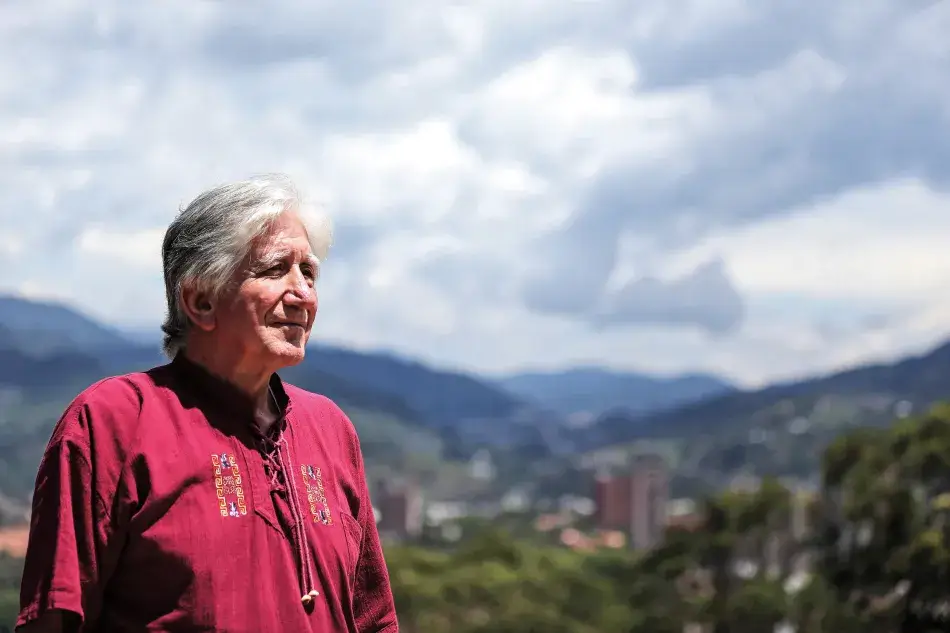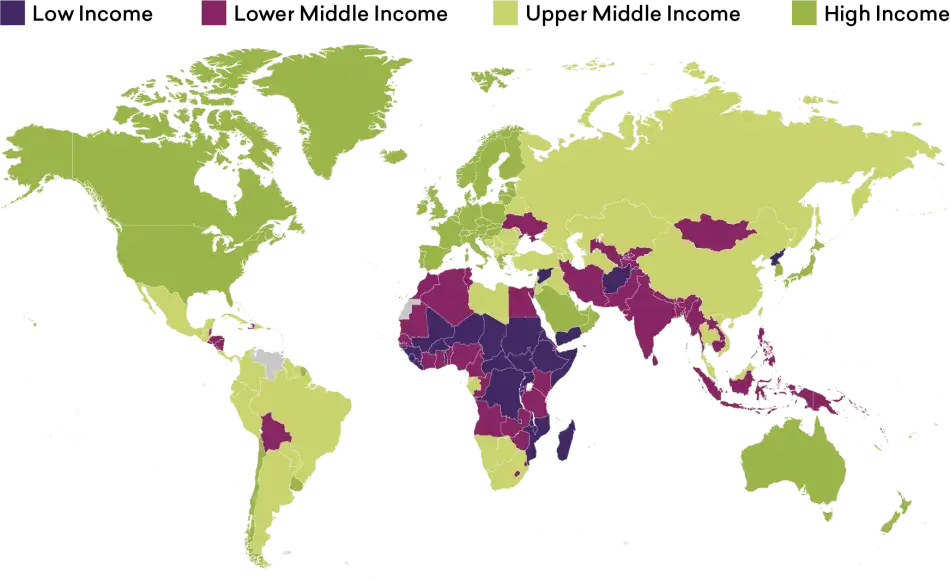Introduction
In the 1980s, Colombian physician Francisco Lopera and nurse Lucía Madrigal noticed an alarming pattern in Medellín: families whose members developed severe memory loss in their forties.4 They published their intriguing findings but struggled to gain traction in the global scientific community until Kenneth Kosik, a U.S.-based neuroscientist, traveled to Colombia to give a talk on Alzheimer’s disease in Bogotá. Lopera attended this seminar and, following the talk, he approached Kosik to share his own findings.5 Thus began a scientific collaboration that discovered the E280A presenilin genetic mutation, the most common cause of familial early onset Alzheimer’s.6
This work was directly supported by grants from the National Institutes of Health (NIH), specifically the National Institute on Aging and the Fogarty International Center (FIC). Building from a foundation of trust among patients and researchers in the region, Lopera and his collaborators identified five thousand patients from twenty-five families who have early onset Alzheimer’s disease. They share a genetic mutation first brought to the region by a Spanish colonist in the 1500s.7 By identifying families genetically destined to develop early onset Alzheimer’s disease, this collaboration generated a unique opportunity for research into preventing the disease. The first prevention trial for Alzheimer’s disease is currently being conducted by the U.S. pharmaceutical company Genentech, a subsidiary of the Swiss company Roche, in both this Colombian population and with U.S. participants as a part of the U.S. Alzheimer’s Prevention Initiative.8
Many U.S. collaborators are working with this Colombian population to better understand the biology of Alzheimer’s disease. The Multicultural Alzheimer’s Prevention Program at Massachusetts General Hospital is directed by Yakeel Quiroz-Gaviria, a Colombian native, and has already begun a longitudinal biomarker study in its COLBOS (Colombia-Boston) project. Participants undergo initial scanning and testing with Lopera at the University of Antioquia in Medellín and then travel to Boston for additional neuroimaging.9 Among other findings, the collaboration has discovered brain pathology well before clinical onset, generating hopes that biomarkers and preventive therapeutics may unlock improved treatment for Alzheimer’s disease.10
This story is a key part of the larger race to cure Alzheimer’s disease for those suffering from its debilitating effects, including an estimated six million Americans.11 It is one of many examples that demonstrates the essential role that scientific collaborations with countries that are emerging science partners (ESPs) play in the American research and development (R&D) enterprise (see Emerging Science Partners, ESPs).
Publication trends indicate the global recognition of the importance of international collaboration. Between 2010 and 2020, the percentage of internationally coauthored science and engineering (S&E) publications increased from 18 percent to 23 percent; authors based at U.S. institutions had the greatest participation, with authorship on approximately 35 percent of all internationally coauthored publications in 2020.12 While most U.S. collaborations with international partners continue to be with established scientific enterprises in countries such as China and the United Kingdom, the United States is a top collaborator with many emerging scientific enterprises as well, including in Colombia, South Africa, and Thailand.13 International scientific collaborations are critical endeavors that drive innovation and boost prosperity in all parts of the world and should include ESPs, as scientific talent is a resource that all nations possess.14
Engagement of the U.S. scientific community with ESPs is essential if the United States is to continue to have a leadership role in pushing the frontiers of scientific discovery, addressing global challenges, and building the global science and technology enterprise. Scientific capacity will grow in the United States and ESPs alike, and scientific advances will proceed more effectively. Moreover, international understanding and relationships across cultures and nationalities will be bolstered.

U.S. support for collaborations with ESPs is provided by a range of federal agencies and programs and nongovernmental funders, each with its own specific authorities and requirements. The United States also supports ESPs through its membership in and support of the United Nations (UN) and other international organizations. In the face of current global challenges, it would benefit the United States to revisit and reevaluate some of its policies and requirements for allocating funding to international researchers and research programs.
As the United States builds scientific collaborations, including in evolving and emerging fields of science, numerous challenges must be addressed, such as differing research priorities and approaches, mismatches in capacity, and historical inequities. Addressing these issues requires changes in policy, program design, and implementation across the scientific community and a range of stakeholders.
This report demonstrates the importance of these collaborations to the United States, explores the challenges they face, and concludes that the United States should actively foster and build collaborations with ESPs, paying careful attention to issues of equity in these partnerships, especially surrounding issues of gender parity (see Recommendations).
Countries by Income Level

Source: World Bank Development Indicators, “The World by Income and Region,” World Bank.15 Map image © by Free Vector Map.
Defining ESPs
This report uses the term emerging science partners (ESPs) to refer to a subset of countries and the researchers within them. ESPs are actively seeking to build their own science capacities to be consistent with those of the Global North and more recently industrialized countries such as Brazil, China, India, Mexico, and South Africa.
ESPs include countries identified as “least-developed countries” (LDCs) by the UN and as “low- and middle-income countries” (LMICs) as defined by the World Bank. The Academy’s Challenges for International Scientific Partnerships (CISP) ESP working group has a particular focus on nations identified by The World Academy of Sciences (TWAS) as S&T-lagging countries with capacity-building needs. These countries are in the Global South, in sub-Saharan Africa, Latin America and the Caribbean, Asia and the Pacific, and in the Middle East and North Africa.
The concept of an “emerging” science partner is intrinsically in flux as individual countries shift economically and adjust their investments in S&T. Countries that could be considered ESPs as of the publication of this report may no longer be considered “emerging” as their science capacities expand. This report focuses on the benefits to the United States of strengthening partnerships with countries that are on an emergent trajectory because of their potential for scientific excellence, especially if their domestic funding and support for science research are increasing. Partnerships like these have historically been valuable for the United States. South Korea and China, two countries that would have been considered ESPs in the not-too-distant past, are two of the top U.S. scientific collaborators today. In 2020, China was the top collaborator with the United States on scientific publications (26.28 percent); South Korea was also a significant partner (4.50 percent).16 Notably, South Korea ranked second globally in 2019 for percentage of gross domestic product (GDP) investment in R&D (4.64 percent; the United States’ and China’s percentage of GDP investment in R&D were lower at 3.07 percent and 2.24 percent, respectively).17
“Engagement of the U.S. scientific community with ESPs is essential if the United States is to continue to have a leadership role in pushing the frontiers of scientific discovery, addressing global challenges, and building the global science and technology enterprise.”
While this report focuses on partnerships with ESPs, and the recommendations are primarily intended to foster and strengthen such collaborations, many of the perspectives addressed in the report echo the initiative’s earlier reports on international science cooperation, which hold lessons and suggestions for strengthening partnerships and building equity into scientific research more broadly, both in international and national collaborations.
Defining Partnerships
Research partnerships with ESPs can take a multitude of forms, including peer-to-peer collaborations, formal large-scale scientific collaborations that include ESP members (e.g., CGIAR; Human Hereditary and Health in Africa, or H3Africa; and MeerKAT), and partnerships focused on economic development or capacity building (e.g., research programs through the United States Agency for International Development [USAID] and the African Science Academy Development Initiative [ASADI]). This report takes a broad view of collaboration, and its findings are relevant across scales and types of collaboration and across scientific disciplines.